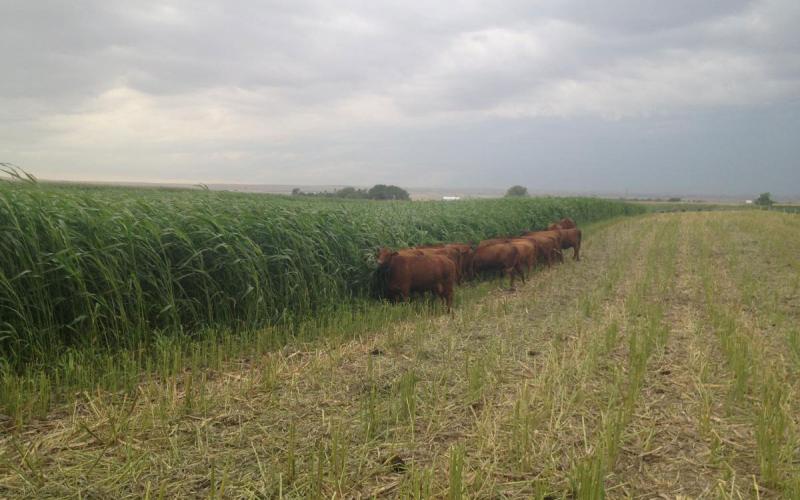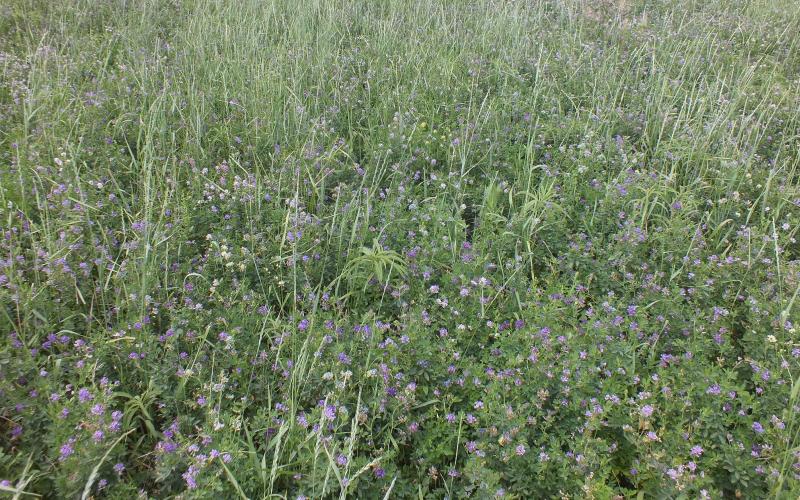Written by Danielle L. Evers under the direction and review of Rosie Nold.
In the livestock industry, profitability is determined by the efficiency of production; with growth and development of offspring having a large impact. In sheep production, ewe nutrition is one of the biggest factors in fetal growth, milk production, and lamb performance; therefore, determining how profitable a production system will be. Not only does the ewe depend on proper nutrition for fetal development but also udder development and milk production. Lambs are almost solely dependent on the ewe’s milk for the first 4-6 weeks of life with milk still contributing to lamb’s energy intake until weaning. Thus the ewe has to produce optimal milk for the lamb to grow and develop to the best of its genetic capability.
Nutrition & Performance
The correlation between nutrition during gestation and ewe performance has several different aspects that can affect the ewe and offspring. Research has shown that ewes fed a diet at only 80% of their energy requirement during the last 4 weeks of gestation have a lower body condition score (BCS) postpartum until day 40. Ewes offered a higher energy diet, at either 100% or 120% of requirements produced a greater amount of higher quality colostrum and produced more milk throughout the lactation which is the key factor influencing growth and development of lambs. This is demonstrated by the increased average daily gain of lambs in the first month postpartum and until weaning. The group fed 120% energy diet obtained slightly higher average daily gains post-weaning, however both the 100% and 120% diets had an overall tendency to reach slaughter weights sooner (McGovern, Campion, Lolt & Boland, 2015).
Sheep do not require specific feedstuffs; they require a certain amount of metabolizable energy that can come from a variety of feed sources. However, different feedstuffs have different effects on fat and protein concentrations in the milk produced. Feeding higher quality feedstuffs with higher energy and protein density allows the ewe to produce milk with higher fat and protein (Greiner, n.d.). Lambs are dependent on milk as their sole source of nutrition for the first part of their lives, therefore alterations to ewe nutrition have an effect on lamb’s growth and performance (McGovern, 2015). Several energy sources are available with the major sources being pasture land, hay, silage and grains. Meeting energy requirements without over or underfeeding a ewe is the biggest challenge to a producer.
Late Gestation
Appropriate nutrition during late gestation is important because the last 6 weeks of gestation is when the fetus grows the most. Several factors affect the nutrient requirements of a ewe; age, weight, or how many fetuses she is carrying. Energy needs increase roughly 57-66% during late gestation due to fetal growth and mammary development (Greiner, n.d.). Nutrition during late gestation plays a major role in fetal weight, lamb vigor, colostrum production, and ewe body reserves which can effect lamb growth rate and weaning weight. The final four weeks of gestation are particularly important for udder development and subsequent milk production because 70% of udder development occurs during this time. Colostrum yield is affected specifically by the energy supplied during the final week of gestation. Ewes fed a restricted energy diet will produce less colostrum which could be detrimental to the lamb’s immune system (McGovern, 2015). Late gestation nutrition is also important to add extra body reserves so the ewe doesn’t get postpartum ketoacidotic symptoms. The most frequent ketoacidotic symptom is ketosis, commonly known as pregnancy disease. Ketosis occurs when a ewe’s energy intake is less than her energy requirement and can eventually lead to death. Ketosis is most often seen in ewes carrying multiple fetuses (Schoenian, 2014).
Lactation
Energy needs increase again during lactation because ewes have to partition nutrients to produce milk for lambs. Ewes raising twins will produce more milk than ewes raising single lambs even though both are fed the same energy diet (McGovern, 2015). Ewes fed a higher energy diet during gestation produced more milk during lactation than those on a restricted diet. Therefore, benefits could be achieved by increasing the plane of energy during the late gestational period.
The Bottom Line
Feed constitutes the greatest single cost on a sheep operation, especially during late gestation; therefore, producers have to be cognizant in controlling feed costs in order to be profitable (Greiner, n.d.). The most difficult challenge to producers is finding the balance between controlling feed costs while optimizing animal performance.
In conclusion, ewe milk production is the primary driver of lamb growth rate in early postpartum and restricting a ewe’s diet during the last 4 weeks of gestation can negatively impact lamb performance. Ewe nutrition is the most important aspect of a sheep enterprise, and efforts to feed for a specific stage of production will pay off economically.
References:
- Greiner, S. (n.d.). Ewe Nutrition. Retrieved November 10, 2015
- McGovern, F., F. Campion, S. Lott, and T. Boland (2015). Altering ewe nutrition in late gestation: I. The impact on pre- and postpartum ewe performance. Journal of Animal Science, 93(10), 4860-4860
- McGovern, F., F. Campion, T. Sweeney, S. Fair, S. Lott and T. M. Boland (2015). Altering ewe nutrition in late gestation: II. The impact on fetal development and offspring performance.
- Journal of Animal Science 2015 93: 10: 4873-4882
- Schoenian, S. (2014, February 15). Sheep 201: Flock nutritional requirements. Retrieved November 10, 2015.


